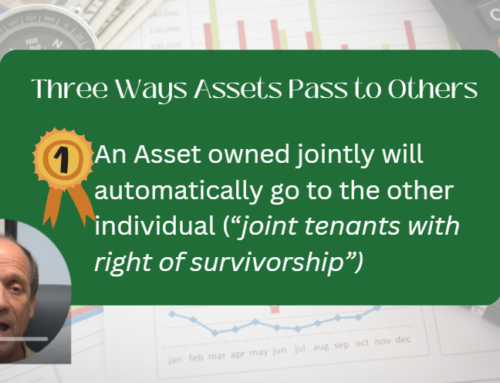Retired investors should think their strategy to account for risk, expenses and inflation.
Most investors know that selecting the best asset allocation is critical to building a good nest egg in the decades leading up to retirement.
But the game changes after that. A stock-laden portfolio designed for growth may be too risky when there’s less time to wait out downturns and no fresh money going in. And the safe-looking alternative of switching to short-term bonds and cash could backfire if inflation takes a toll in a long retirement.
Financial advisors say investors need to rethink their strategy in and near retirement. The trick is to leave a cushion for things that can’t be nailed down, like how long the investor will live, how high inflation will go and what medical expenses may come up.
“Asset accumulation pre-retirement is a different strategy than income-generation post retirement,” says Len Hayduchok, CEO of Dedicated Financial Services in Hamilton, New Jersey.
“At retirement the portfolio is overall less risky, but it should have [risky assets like stocks] if an individual is expecting to live more than 10 years.”
Starting about five years before retirement, the investor should start making the portfolio retirement-ready, says Robert Johnson, principal at the Fed Policy Investment Research Group in Charlottesville, Virginia.
“The appropriate asset allocation for individuals changes as you approach and are just in retirement,” he says, noting that most investors are wise to minimize risk by reducing stock holdings in the last few years before retiring.
“The five years prior to retirement can be considered the retirement red zone,” he says. “And, just as a football team can’t afford to turn the ball over and fail to score points when inside the opponent’s 20-yard line, the retirement investor can’t afford a big downturn in the retirement red zone.”
Speak with the Right Financial Advisor For You
Finding the right financial advisor that fits your needs doesn’t have to be hard. SmartAsset’s free tool matches you with top fiduciary financial advisors in your area in 5 minutes. Each advisor has been vetted by SmartAsset and is legally bound to act in your best interests. If you’re ready to be matched with local advisors that will help you achieve your financial goals, get started now.
Building up bonds and cash can make the portfolio safer, and a person without wages might be wise to have a bigger rainy-day fund than in the working years. But a sound plan takes more than that, and it’s possible to be too safe as well. So here are a few key points to remember:
Inflation matters.
Investors in or near retirement today are old enough to remember the double-digit inflation of the late 1970s and early ’80s. Of course, wage increases were part of that, so people in their working years muddled through.
But retirees obviously cannot count on wage gains, and a jump in prices could do a lot of damage to a portfolio designed to emphasize only income. Even low inflation can double prices over 20 or 30 years.
Investment plans typically assume a steady level of inflation such as the long-term average of 3 percent a year for the consumer price index. But that figure is calculated with thousands of goods and services that don’t reflect any individual’s actual spending.
In the real world, an individual’s personal inflation rate could be higher if there will be a lot of spending on things that go up at a faster rate, like health care and college costs.
Because of this danger, experts say investors should leave part of the portfolio in growth-oriented holdings like stocks, though generally less than in the earlier decades of building a nest egg.
It may be surprising to many investors, but lots of target-date funds, which contain a mix of stocks and bonds automatically adjusted over time, keep half the holdings in stock funds, even for investors in their 70s.
Though stocks are riskier than bonds and cash, stock gains have historically beaten inflation over time. And many stocks pay dividends.
Spending is not steady.
While the typical plan means to produce a given income that will stay the same, or perhaps go up with the chosen inflation rate, younger retirees may spend heavily on travel but not health care, while older ones will do the opposite.
One old rule of thumb said stock allocations should equal 100 minus the investor’s age, with the rest in bonds and a small cash fund. Many experts consider that too simplistic these days given the unevenness of retirement spending.
“We believe your asset allocation should be based on your cash needs and tolerance for risk, not your age,” says Greg Sullivan, president and CEO of Sullivan Bruyette Speros & Blayney, a planning and portfolio management firm in McLean, Virginia.
“How much income do you need from your portfolio to meet your lifestyle cash needs? We like to create an eight-year cash needs buffer in low-risk assets and invest the rest of the portfolio in long- term growth assets, such as U.S. stocks,” Sullivan says.
He prefers that ordinary living expenses be covered by bond interest and stock dividends, if possible, but warns against buying long-term bonds today because they could lose value if rising interest rates make newer, better- paying bonds more appealing.
Key to the strategy is to avoid having to raise cash by selling assets when prices are low. Money that will be needed in the next five years should therefore not go into stocks, Sullivan says. But stocks generally rack up gains over five-year periods, even if they plunge in the meantime.
If the portfolio has enough in other types of assets, holdings like safe government bond funds can be sold to replenish the cash fund from time to time. That way, the stock holdings should not have to be tapped at an inopportune time, like during a market dip, and can be left to weather the downturns.
Be liquid.
Though much of the portfolio may be allocated to long-term holdings, it pays to rely on assets that can be sold easily to make changes or generate cash.
“We are not concerned whether the needed growth comes from dividends, capital gains or outright appreciation,” says Eric Nager, advisor at Southern Capital Services in Daphne, Alabama. “As long as clients are taking a sustainable draw from an overall asset base that is, on average, growing faster than their draw, they are in effect giving themselves raises to combat the rising cost of living.”
To stay liquid, he likes managed funds and exchange-traded funds in the five major asset classes: cash, bonds, stocks, commodities, and real estate.
Broaden your horizons, but not too wide.
Though investors tend to think in terms of stocks and bonds, other assets can be helpful too.
Johnson suggests looking into buying a longevity annuity, which pays a steady income for life after the policy owner reaches a certain age, like 85. Inexpensive if purchased 20 or 30 years before the payments start, these offer generous payouts and insure against living longer than expected.
With this safety net, the investor can spend more freely before the annuity income kicks in, or can take a little more risk in investments.
“Having the peace of mind that a longevity annuity provides [allows one to] invest more aggressively and earn higher returns,” Johnson says.
ORIGINALLY POSTED: https://money.usnews.com/investing/investing-101/articles/2018-05-29/4-tips-that-make-investing-in-retirement-easy
Retirement Investing Tips, 4 Tips That Make Investing in Retirement Easy_May 2018







